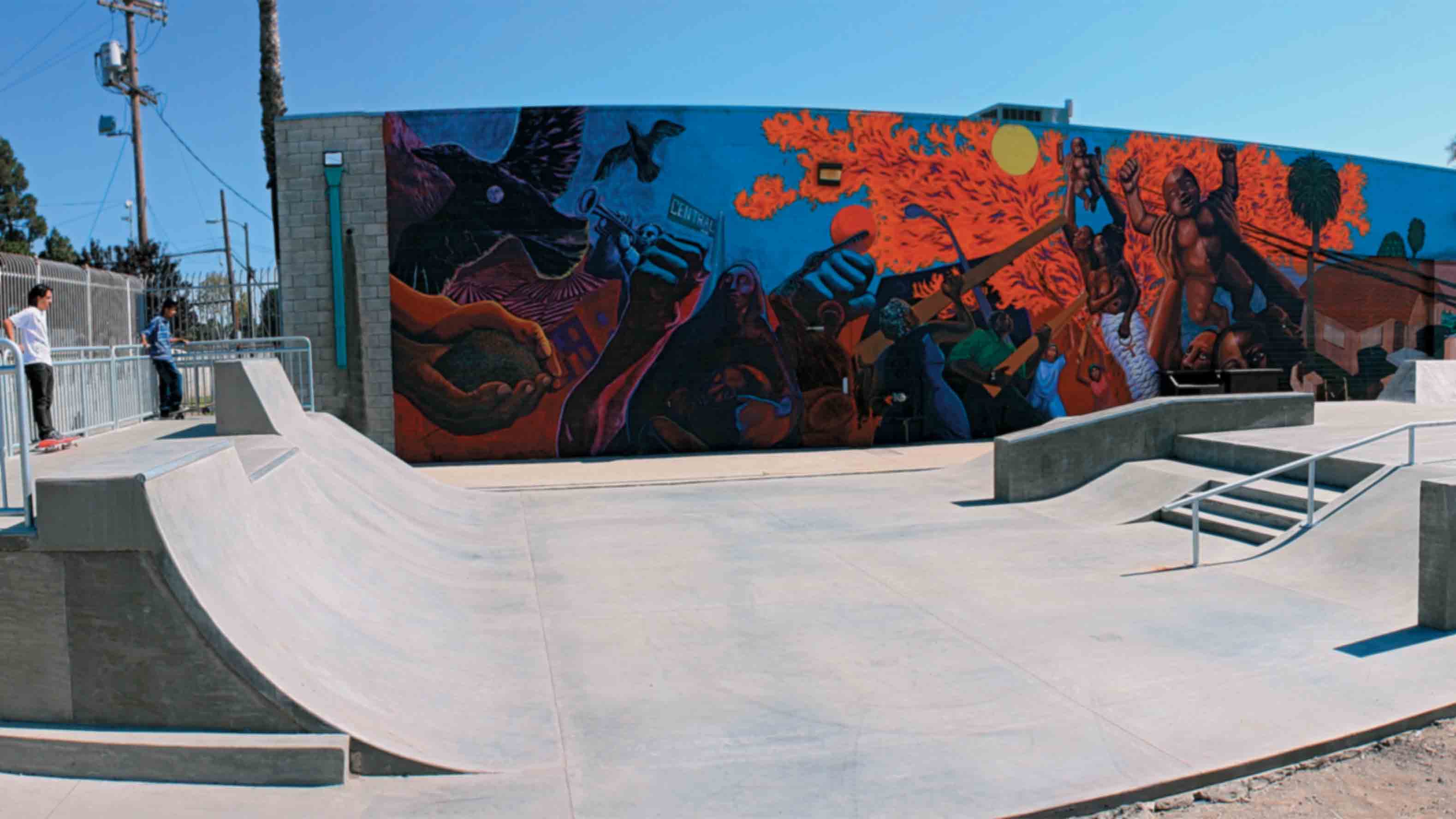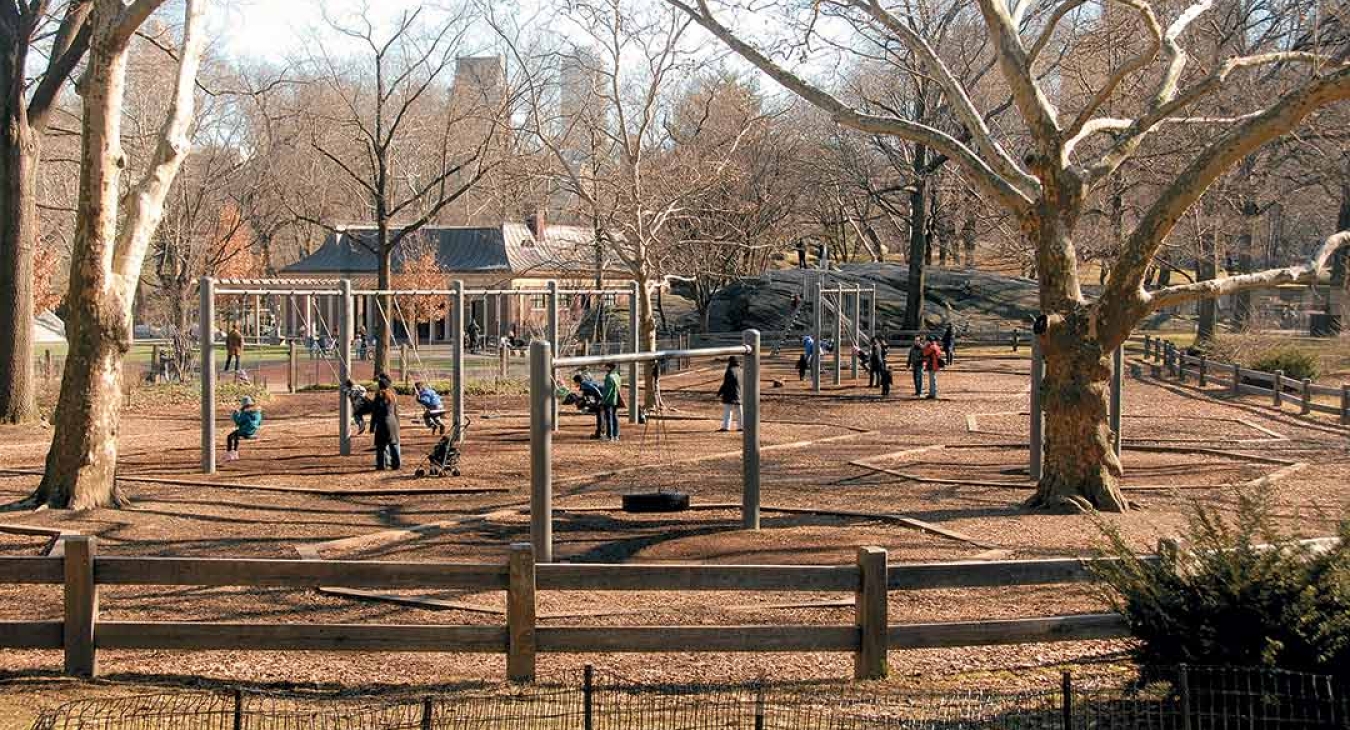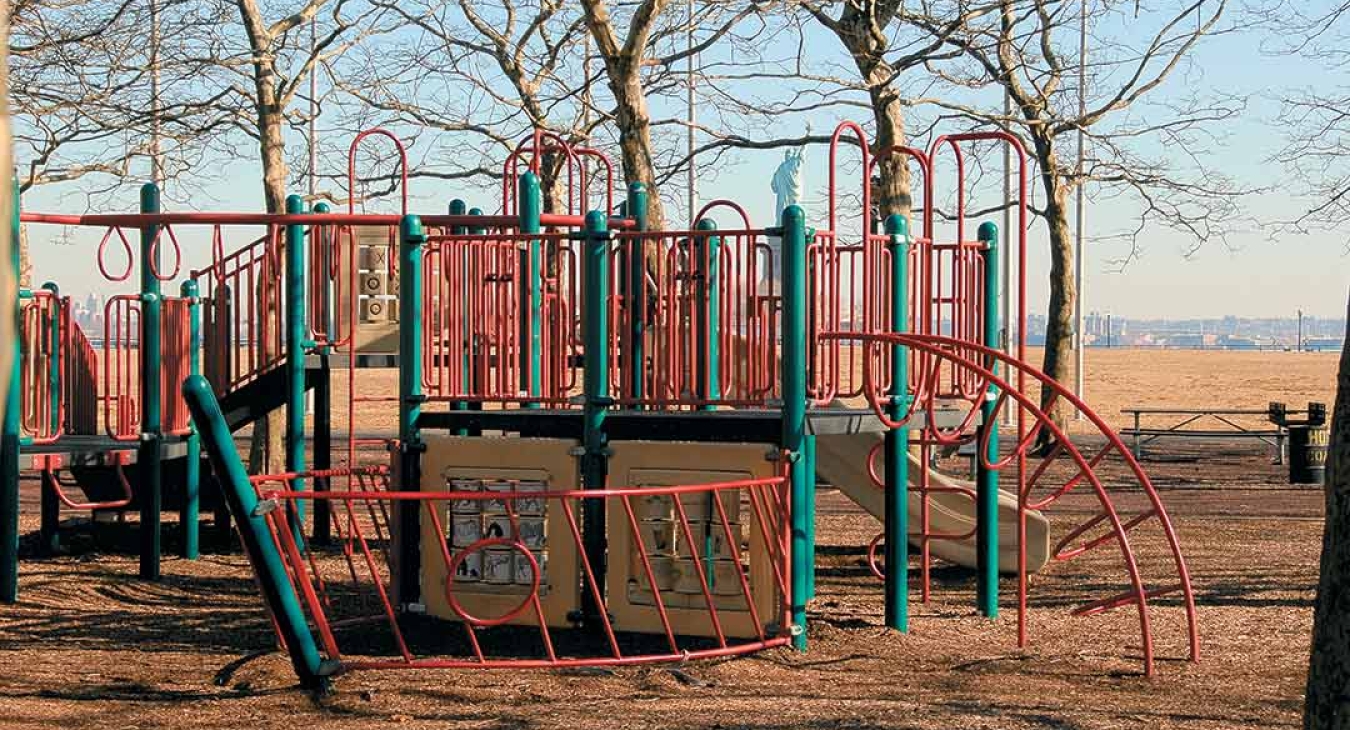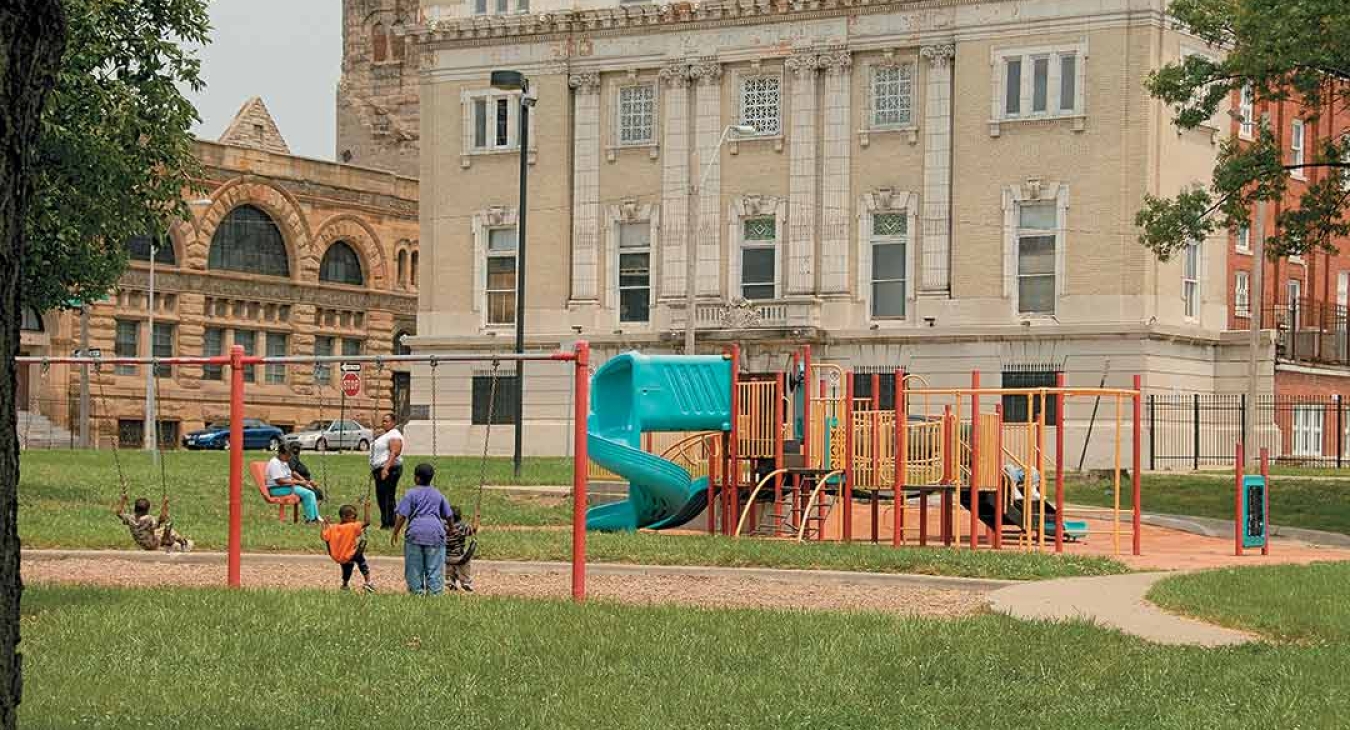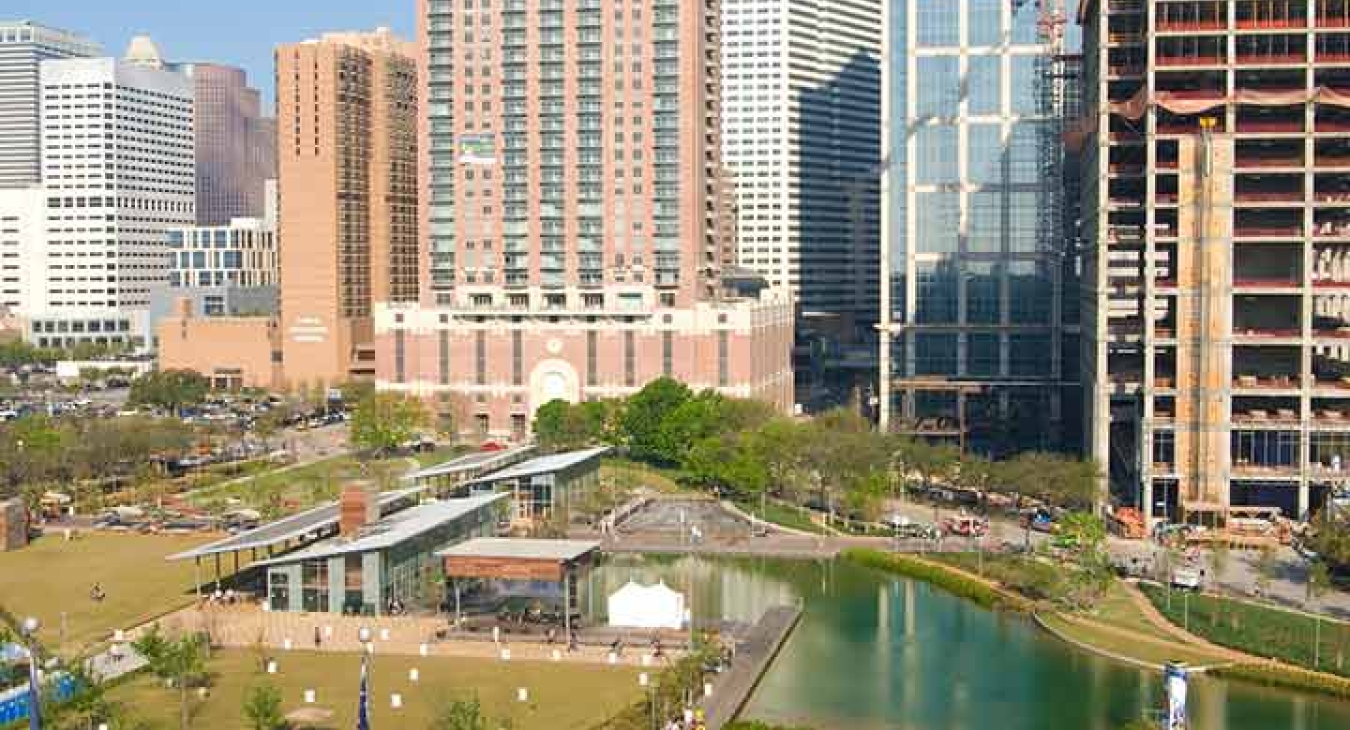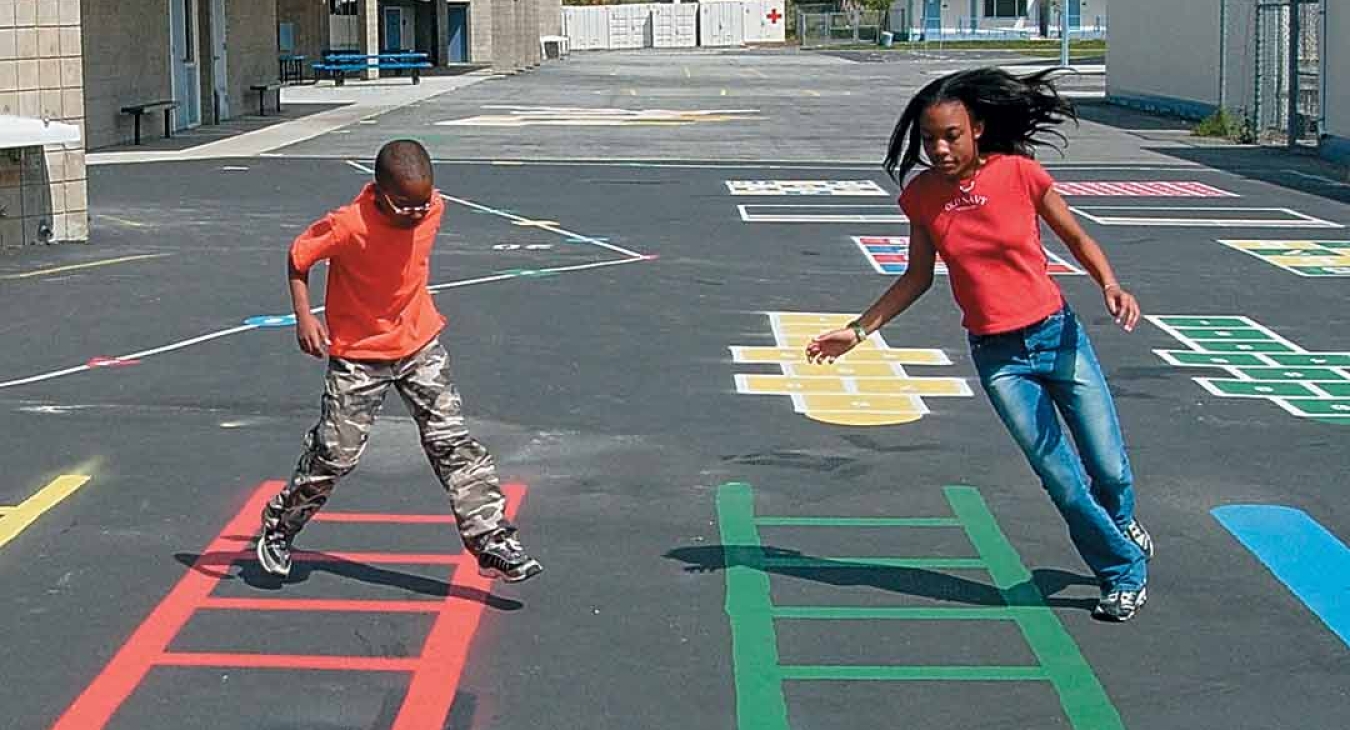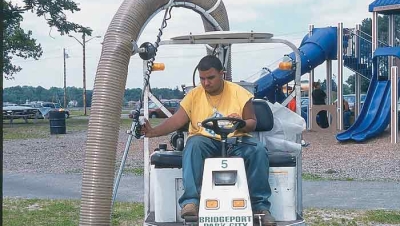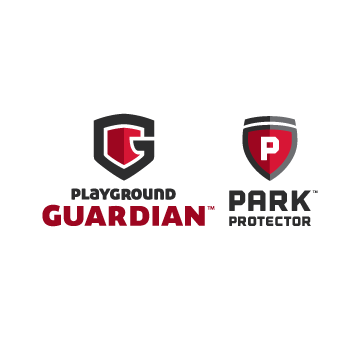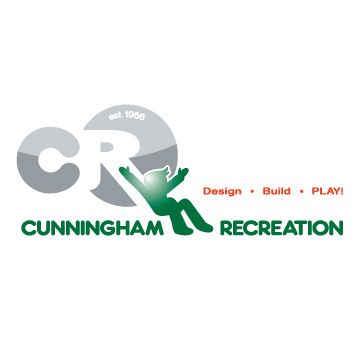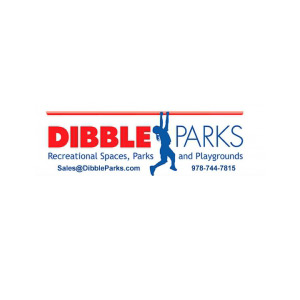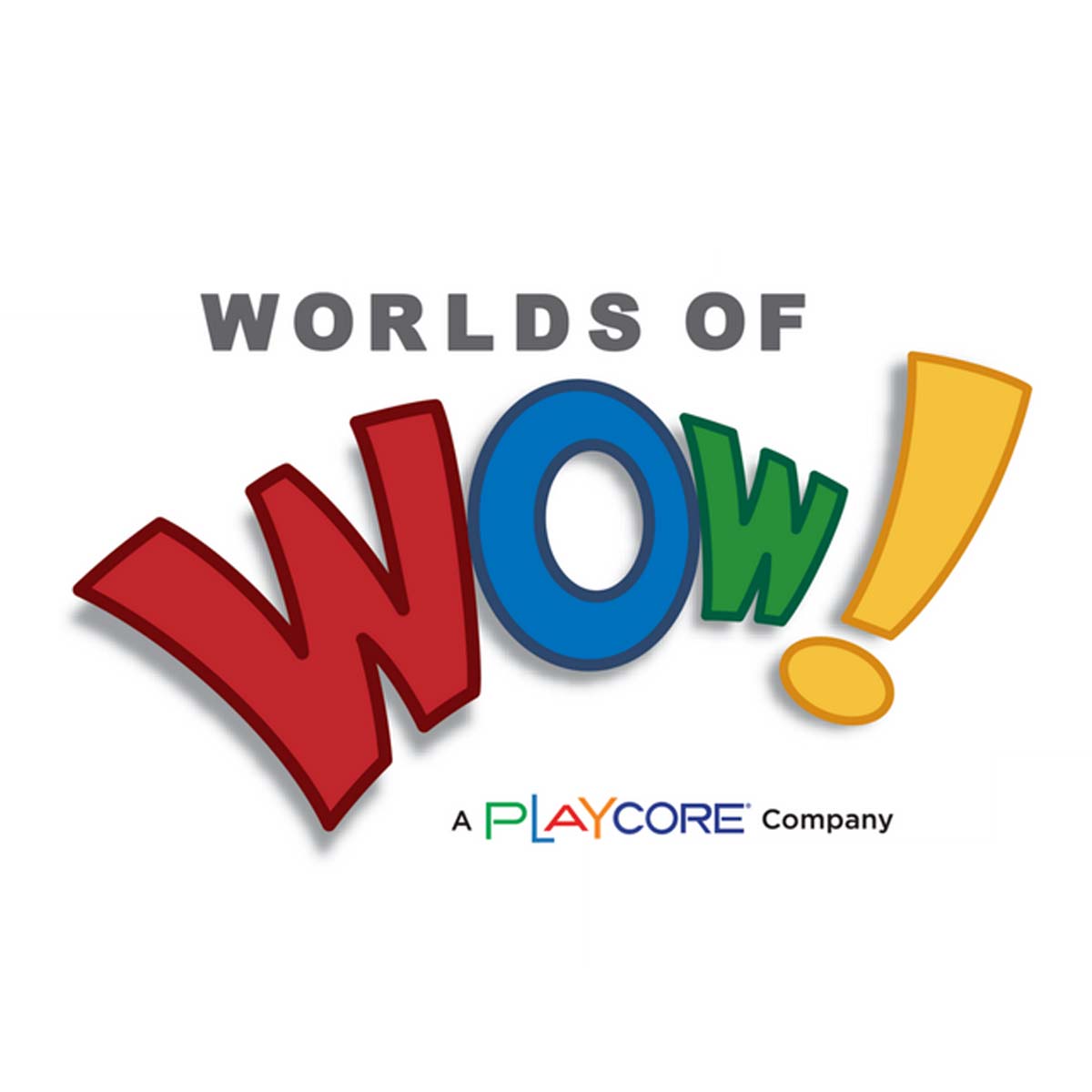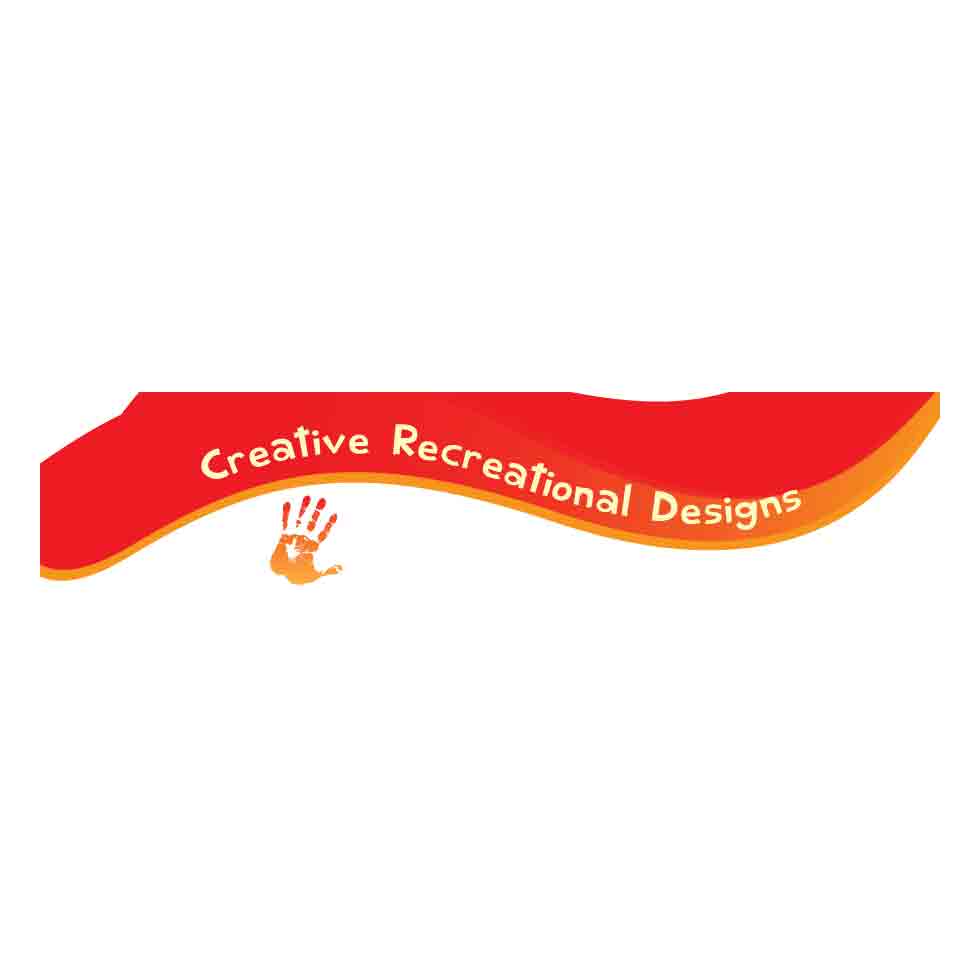Gleaming steel and glass skyscrapers that soar into the sky, casting shadows on most everything below as the sun moves east to west.
Decades-old neighborhoods of brick and mortar homes and businesses.
Gang-related and other violence that continually haunts residents of cities, large and small.
There are so many people and not enough space.
This is the environment thousands of children call home and live in every day—children who need play, nature, and the outdoors just as much, maybe even more, than kids in the suburbs or smaller towns and cities across America.
City kids need to play, but are they getting it?
Study after study continues to reaffirm the benefit of play for a wide range of reasons, from physical and mental health to intellectual and social development.
In fact, there is no shortage of studies on play in all its forms as well as in a variety of spaces and settings, including urban areas. One such study, “The Power of Urban Play,” canvassed parks and recreation departments across the United States in 2008 and 2009 to “begin exploring the unique needs and trends of their cities and to shape what later became the five best practice themes of this report.” (The Power of Urban Play, pg. 4)
The report offers excellent insight into the issues facing not only children and their urban environment but also urban park planners. The report also offers ideas and solutions to some of those pressing problems in urban areas.
What Is Urban?
What exactly is “urban”? One of the best definitions we’ve found is “an area with high population density, such as a city or town."
In “The Power of Urban Play,” a project sponsored by PlayCore, the definition is simple. “Density defines the ‘urban realm.’” (The Power of Urban Play, pg. 8)
While a definition of urban might be relatively simple, trying to boil down all the complexities of the issues facing urban play is nearly an impossible task. In some cases, the problems facing urban play seem to be as big as the cities themselves.
So why is play such an issue in urban areas? “For the first time in history, more than half the people on earth now live in cities. In the U.S., 79 percent of Americans now live in urban areas. Projections by the United Nations indicate that by 2050, 90 percent of Americans will live in urban areas, a total urban influx of over 100 million residents since 2000 who will need access to resources for play, recreation, and fitness.” (The Power of Urban Play, pg. 5)
And here is the clincher, “This worldwide demographic shift is making urban parks the sole connection to the natural world for an increasing majority of children and adults.” (The Power of Urban Play, pg. 5)
More Cities Becoming Urban
Indeed, according to the 2000 U.S. Census, the top 50 metropolitan areas in the United States have a million or more people. The number of metropolitan areas will likely rise once the 2010 figures are released. Even looking at 10-year-old data, growth figures in some cities are staggering. Take Las Vegas, for example, where the population exploded from 1990 to 2000 by 710,545 people, or an increase of 83.3 percent over the 10-year period.
So the need to address and do something about play in urban areas is real, especially as America adds more urban areas.
As stated in the “The Power of Urban Play” report, “Tragically, many children in urban areas face barriers and disparities to play. Further, urban communities face unique trends and challenges to play as they manage growing urban densities, diversity, and capacity for human coexistence and social cohesion.” (The Power of Urban Play, pg. 4, 5)
Another study, this one commissioned by the Chicago Children’s Museum and titled, “The State of Play in Chicago’s communities,” did similar research as was conducted for “The Power of Urban Play” but focused only on its own community found, “While nearly all respondents recognized value in play, more than half also noted barriers. … Parents reported a lack of time and available space, as well as concerns about violence and safety.” (The State of Play, pg. 2)
In reviewing the two noted studies and other texts regarding urban play, it doesn’t appear there is any one thing that hampers children’s opportunities for play, but rather several “barriers.” In the Chicago study, it noted six different barriers: society does not value play; play, especially outdoor play, is unsafe in many Chicago neighborhoods; adults limit the presence and quality of play; adults are not aware of the connections between play and children’s healthy development; there are not enough resources, strategies or models to help parents and educators meaningfully support play; and children don’t know how to play. (The State of Play, pg. 4)
No Single Issue
Dr. Joe Frost, a noted worldwide expert on play and the Parker Centennial Professor Emeritus at the University of Texas at Austin, said there are multiple issues facing play in urban environments. He told Playground Magazine, “At this point, I do not believe there is a single biggest issue or best corrective measure. A number of related issues are resulting in deprivation of free, urban, spontaneous outdoor play. Resolution will require simultaneous work by multiple agencies confronting multiple, interrelated issues. We are currently seeing a ground-swell of such movement not witnessed since the early child-saving movement in our great cities about a century ago.”
Dr. Frost continued, “During the five years I worked on the recently published book, A History of Children’s Play and Play Environments: Toward a Contemporary Child-Saving Movement (Routledge) and during more than three decades of research, I identified factors that are central in current play issues or problems. These included, in no particular order, abuse of technology, high-stakes testing, fear for children’s safety, excessive safety standards and lawsuits, lack of trained adult leaders in parks, and ready access to outdoor play areas. Poverty, especially in city slums, exerts a heavy influence on children’s opportunities to access and use play facilities. The literature barely mentions this, but our research observations of obese children show that they are deprived of play because of their progressive inability to engage successfully. Deprivation of free, active childhood play is a multi-headed beast. Resolve one of these issues, and the others remain.”
Chapters 8 and 9 in Dr. Frost’s book talk about those issues to varying degrees.
While not technically a barrier per se, another issue facing urban parks planners and those who like to play outdoors in city parks was pointed out by Steve Lampone, deputy director for the Kansas City, MO, parks and recreation department. Talking about issues facing KC parks and playgrounds, he said, “Some of it’s not vandalism, it’s just overuse. Overuse is a bigger problem than vandalism [for KC parks]. Our challenge is to meet the tremendous demand for use.”
The Trust for Public Land commissioned a survey in 2009 that suggests “the economic downturn has spurred a sharp increase in public park and playground use among families with kids, especially those with children younger than 6 years old.”
On The Same Page
Still, one more issue that Lampone brought up that some outside the urban realm might not even think of is getting people on the same page. He explained, “[Another challenge] is determining what the community wants because not all groups are as organized as others.”
That thought was somewhat echoed by Lisa Moore, vice president, corporate strategic services for PlayCore. She said, “I think the most important challenge for all cities is to define the unique needs of the play environment for the particular community and to get a variety of stakeholders involved in the process so that there is sustainability over time.”
While some may view the issues or barriers faced by America’s largest cities as “big city problems,” Joseph Wynns says not so fast. Wynns is a certified park and recreation professional with 35 years of urban experience and is the former director of the Indianapolis Parks and Recreation Department as well as the project leader for “The Power of Urban Play.” He told Playground Magazine, “The issue of density, diversity, and integration has trickled down to smaller cities. Many small cities are growing at a rapid pace and are struggling to keep up with growth and funding for quality play spaces. The population is outgrowing the available green space, and some small cities will be built out in the next 20 years.
“In order to manage this density issue, small cities will need to become smarter within land use planning. Density is closely related to diversity. However, diversity has often not been clearly defined. When we hear the word diversity, we often think inner city, instead of celebrating differences and integration. Small cities should master integration between different groups of people to encourage coexistence within quality play spaces.”
Five Best Practices
So big or not-so-big, cities face some of the same issues when it comes to play. Which brings us back to “The Power of Urban Play” and the five “Urban Play Best Practices” that were derived from the surveys and interviews done for the study. They are, along with the study’s solutions and suggestions:
Design for compelling play environments: Agencies should design play environments that are compelling and meet the unique needs of diverse urban users. Engaging a variety of stakeholders, through participatory design, is critical for ensuring best practices for multigenerational inclusion, integration of natural elements, increased physical activity, safety, and equitable access to the space.
Create playgrounds as crime prevention programs: Communities should view playgrounds as crime prevention assets by considering visibility in the design, establishing proactive partnerships with local law enforcement and neighborhood groups, and by keeping the playspace active and well-maintained.
Offer programs on the urban playground: Public play environments should market free play and supervised play programs that promote high levels of physical activity and learning while maximizing joint use opportunities, providing play leaders for supervision and play facilitation, and utilizing mobile play programs for additional reach and interest.
Execute partnerships for play: Partnerships should be established to strengthen the variety and reach of play opportunities for a broader reach of play resources, facilities, and programs while also increasing usership and ensuring sustainability over time.
Develop an urban playground master plan: A comprehensive and collaborative master plan should be developed for play and playgrounds that includes a current asset management plan; provides guidance for the overall goals, objectives, and strategies for strengthening play; specifies funding cycles; monitors implementation and ensures continuous improvement.
Unsafe Play Environments
One of the most common perceptions of play in an urban environment is that it’s unsafe, due to a variety of reasons, including gangs, drugs, and other violence. Headlines scream, “Playground burns to the ground” or “Parks Worker is Raped at Playground” or “Vandalism May Force Jeannette Playground To Shut Down” and on and on. Regardless of how widespread the problem actually is or appears to be, it’s the perception that makes parents nervous enough to keep their kids inside. This comes from the Chicago study under the barrier “Play, especially outdoor play, is unsafe in many Chicago neighborhoods." “One community educator, who teaches children ages six to 12, said, “I work in a community where there is a lot of violence. So even if kids wanted to be themselves [and play freely outdoors], their parents are concerned about—you know—that drive-by. So they make them stay inside…” The study goes on to say, “Despite very real dangers, adult perceptions of danger can also greatly limit children’s access to play. Adults often place unnecessarily strict boundaries on children’s play as a result of their own safety concerns.” (The State of Play, pg. 4)
“Safety and crime are real issues facing playgrounds,” Wynns said. “To better address the issue of safety, cities should conduct an asset inventory of their playgrounds. Conducting the asset inventory will help advise the decision maker of potential risks and create a replacement/repair program to assist in gaining support and funding for playgrounds. A plan needs to be created to remove potential fears the public may have, many times related to the media, and promote the positive benefits. When we provide supervision, planned programs, events, and users, we can help minimize fear and promote the many benefits of community playspaces.”
As mentioned earlier, it's overuse of parks that Kansas City struggles with, but that’s not to say the city doesn’t deal with vandalism and crime as well, KC Parks’ Lampone said. Keeping a park clean and well-maintained provides many benefits, one of which, he believes, has to do with safety. He said, “No matter how nice [park equipment] is, if it’s not clean, there’s that perception, ‘if it’s not clean, it’s unsafe’.”
Lampone used Kemp Park, located at 10th and Harrison near downtown Kansas City, as an example of what can be done if a city and other interested parties take the initiative to clean up a park and keep it well maintained. He labeled Kemp Park a “reclaimed” park.
“The area [where the park is] used to be full of drug addicts, drunks, and homeless people,” Lampone said. “People thought we were crazy for doing a park there.” But KC “reclaimed” the park and added a nice playground with new equipment. Still, citizens, especially families, we’re quite ready to give Kemp Park a try. “The playground sat there like an island with little use for 7-8 years,” Lampone said. But gradually, as the city was vigilant with maintenance and the police stepped up patrols, the park saw increasing use. “Now people are asking what activities we can have there,” Lampone said.
In Kemp Park’s case, more use has proven to drive undesirable activities out, replaced by families and children enjoying a green space that the high-density neighborhood (about 4,634 people per square mile) had been lacking for years.
Key Combinations
We asked Wynns about the lack of playgrounds in low-income urban areas, where safety and crime are concerns, and what might be the root cause. He commented, “Safety, crime, and funding can all play a role. However, my experience has led me to believe that vision, planning, and understanding of social, cognitive, physical, and emotional benefits of play can have a lasting impact on children in urban communities. Playgrounds can also provide ‘front yards’ for many low-income, dense communities and provide a place for neighborhood integration. In some neighborhoods, they may be the only means of connecting children to nature because of density or poor land use planning.”
Lampone is also a big advocate for “The Power of Urban Play’s” third best practice: Offer programs on the urban playground. Lampone said, “Programming, especially at a larger park, is critical. You get more benefit from the park with programming.” Then he added, it’s also important to have adequate lighting, landscaping, comfort amenities such as benches, drinking fountains, and shade structures. It’s got to be a total package.”
One suggestion in that same “The Power of Urban Play” section is, “playleaders provide important supervision for children on the playground and can serve as ‘watchdogs’ for graffiti, crime, equipment that needs maintenance, and other potential hazards while also promoting valuable play experiences.”
One such program we came across this summer was New York City’s Urban Park Rangers’ Wild Playground program. Twice a week for about two months this past summer, the Wild Playground program had Urban Rangers “facilitate child-directed play in parks' natural areas, providing a safe place for children to explore and experience the natural world.” The Wild Playground program took place at the city’s Orchard Beach Pelican Bay Playground, Marine Park Lenape Playground, and Inwood Hill Park Indian Road Playground, among others.
All these efforts from crime prevention to programming such as Wild Playground to providing safe places for children to play takes planning, a point not lost in any of the studies and surveys we reviewed.
Planning By Whom?
But planning by whom? “A combination [of groups from cities, parks departments, and local citizens] is most effective, but there also needs to be a leading organization to drive the process,” PlayCore’s Moore said. “Many times, we see very proactive and effective parks and recreation departments leading the charge. Effective partnerships can have a tremendous impact on the scope of the project, including timing, funding, design capabilities, volunteer builds, and long-term management plans.”
Added Wynns, “Mayors, city councils, and park boards are responsible for seeing that this task gets done, and city planning departments are integral. Progressive cities are developing 5-, 10-, 15-, 20-, and 25-year plans and considering their overall play strategy. The issue in some cases is that parks/playgrounds may be an afterthought to any long-range plan. The primary focus has been on roads, sidewalks, housing, and sewers. While these are important, citizens need to elect local officials who also understand the important role parks/playgrounds play in stabilizing neighborhoods and promoting overall community health.”
While good things are happening in the urban play arena, there is still work to be done, Moore said. “As urban density continues to grow and as we look toward future estimates of density and, therefore, diversity in urban communities, we have to be very proactive in planning ways for those children and families to have healthy places to play. As we continue to learn best practices for inclusive design, integrating nature with manufactured play equipment, considering site lines, and maintenance for promoting safety and programming in play spaces, we continue to improve the outcomes for communities.”
Wynns stressed that the need is greater today than ever before for good urban play practices and policies. “Yes, there is a much greater need for urban play today than when my career first started,” Wynns said. “When I started, the urban focus was keeping children busy during free time and while parents were at work. The goal today is controlling obesity, connecting children to nature, promoting physical activity, cognitive, social, and mental development, and conflict resolution, to name a few.”
Wynns added, “What troubles me the most is when urban children and families don’t have the same opportunities to experience the value and power of urban play. Children will play, and having a safe and well-maintained playspace is a right, not a privilege. Urban play offers children the chance to develop and become successful and productive citizens. A critical issue facing urban play is a true understanding and commitment from funders and policymakers to support this generation of children. The importance of play is well documented in literature, and it is gaining national interest through a variety of movements. The time is critical for every citizen and leader to support play in every urban community.”
Making sure urban play is well-thought-out and continues to be a viable activity for city kids comes down to what Kansas City’s Lampone labeled “passion.” He said, “The fundamental trait [in providing play] is passion. Where it involves children, you can come up with passion.”

